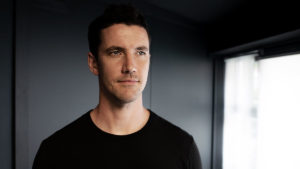Have you ever tried to lose weight? Or do you feel like you’re always trying? It’s tempting to think that after a few weeks on a new method, you could tick it off as done. Has that ever worked?
Nope.
I used to think I could exercise weight off my clients, and myself. I researched and tested all sorts of training methods designed to burn calories and lose weight: tabata, cardio, sprinting, weight training, metabolic conditioning…
The cold, bleak data showed the facts: negligible benefits in the long term. And I’m all about the long term.
So what does work?
I now know, with 100% certainty, that it’s all about what you eat. I learned the hard way – you can’t out-train a bad diet.
I decided from then on that for every single person I work with, I’d give nutrition the same relentless focus that I give to training.
That’s when I began to see real, consistent results.
So what works?
I’m not talking about a new type of diet. I’m talking about an entirely new approach to food, focused on long-term behavioural change. I show my clients how to build small, strategic habits that compound over time to produce impressive, sustainable results.
Don’t think that small means insignificant. Steady, strategic changes to habits, mastered over time, produce incredible payoffs. I’ve seen it time and time again. Integrating small habits into my clients’ current lifestyle works – it’s like slowly and methodically calibrating a machine.
What’s the killer habit?
The number 1 habit that causes long term change?
Eating slowly
Chill out. Put your phone down. Enjoy every bite. If you’re with someone, put your cutlery down and chat.
Many meals are eaten on the fly, at the desk, or in front of a screen. It might sound simple, but you’d be amazed at the difference it makes to take the time to eat mindfully.
What this does is give your body time to register what you’re eating, and tell you when you’re full.
 Sounds simple, but try it yourself at the next meal – it might surprise you how much of an adjustment it is. But it’s manageable – a small, strategic step.
Sounds simple, but try it yourself at the next meal – it might surprise you how much of an adjustment it is. But it’s manageable – a small, strategic step.
This leads naturally into the next most powerful habit:
Stop eating when you’re 80% full
Once you get habit 1 down, it makes habit 2 much easier. Chill, enjoy your food, and try to notice when you hit about 80% capacity. That’s the point where you’ve enjoyed your meal, you’re beginning to feel nicely full, but you’re not getting the meat sweats. Don’t worry too much about it – just try to stop around there. If you get hungry later, have a snack then, but you’ll find when you slow down, stop at 80%, and give yourself some time to register what you’ve eaten, it’ll start to feel just right. 

This allows me to address the areas of training and nutrition in tandem. When you change your behaviour, you begin to function at a higher level across the board. Whatever it is that you do, this will help you do it at the peak of your powers.
Check back in to the blog for a further discussion on more advanced nutrition habits, how to avoid calorie counting and hit healthy portion sizes, and the simple set of kitchen weaponry you need to keep on top of the game.
If you’d like to find out about joining the Precision Nutrition Coaching program yourself, simply get in touch and I’ll send you the info.





